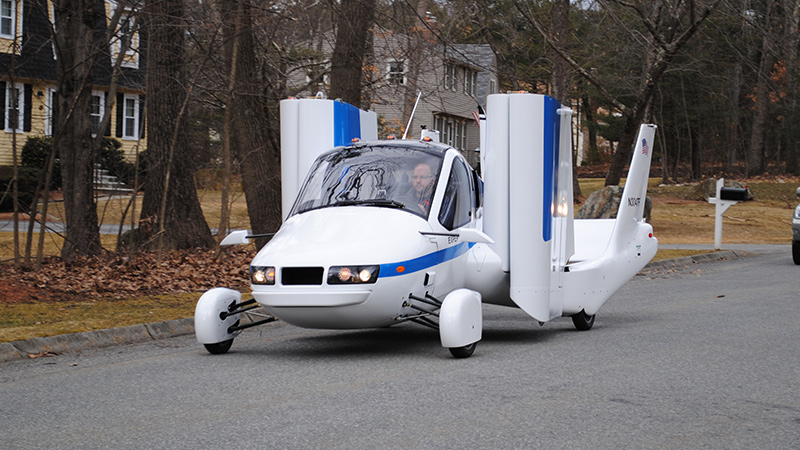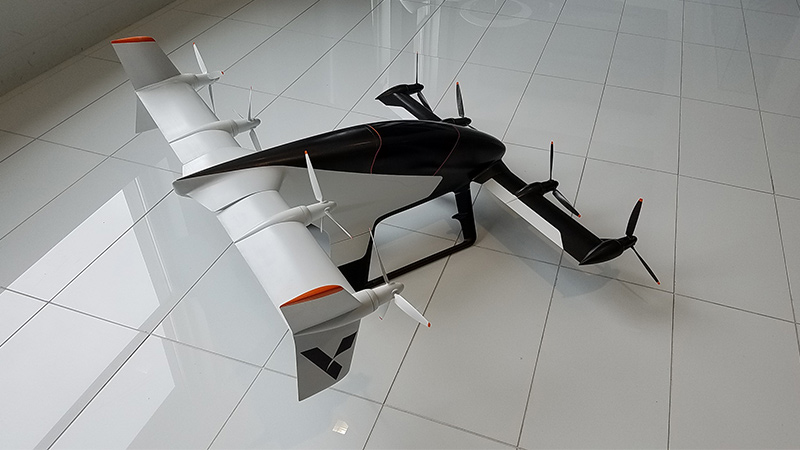Uber, NASA: Stop Saying ‘Flying Cars’
By Tom Risen|June 9, 2017
FROM 2017 AIAA AVIATION FORUM:
DENVER — Companies are grappling with what to call the vertical takeoff and landing craft they are developing with plans of soaring commuters and other passengers to their destinations in minutes instead of hours spent in gridlock.
Many who attended the AIAA Aviation Forum in Denver voiced the same message: Please stop calling them “flying cars.”
“We hate the term flying car,” says Mark Moore, the engineering director of aviation for Uber. “It’s so misrepresentative of what we are doing.”
The notion of flying cars has been joked about and even attempted by some innovators for decades, but Uber and dozens of other companies hope to make vertical takeoff and landing travel an affordable part of daily life, especially for busy city commuters.
Many companies in the space prefer the term electric vertical takeoff and landing, or eVTOL, but that term is “kind of goofy,” and is also not completely descriptive of every company’s design, says Jon Rimanelli, CEO of Detroit-based Airspace Experience Technologies, who wants to rebrand the breed as something other than flying cars.
Rimanelli’s company aims to begin production on MOBi in 2020, an electric-powered VTOL craft that he compares to an “air taxi,” adding that if it catches on MOBi could become a verb, as in “you could MOBi people and cargo between cities and airports.”
A flying car would only be accurate to describe a craft that can both fly and drive on the road, says Geoffrey Bower, chief engineer at A3, the Silicon Valley-based office of Airbus Group created to bring a disruptive tech culture to the company. Bower doesn’t know how to rebrand the concept, but his firm has flown four subscale models of its Vahana eVTOL craft and plans to make the first flight of the full-scale demonstrator craft at the end of 2017 “somewhere on the West Coast,” he says.
“We have built major components and it is undergoing structural testing as we speak,” he says of the Vahana.
The sector includes at least one prototype plane that drives and flies, but very few aviation companies are eyeing a vehicle that can do what the Transition, developed by the Massachusetts startup Terrafugia, can do.
“These are not going to come to your driveway, they are not going to be on every street corner. They are going to be operated from some dedicated infrastructure,” Bower says of the confusion between flying cars and eVTOLs.
Uber is not building its own aircraft but it wants to see others do so so that it can begin aerial ride sharing. Uber’s Moore knows the technology hurdles well. Prior to joining Uber in February, he worked at NASA’s Langley Research Center in Virginia as the principal investigator for the X-57 plane that will test distributed electric propulsion technology. Moore is using that knowledge of the electric propulsion community to build the Uber Elevate ecosystem, which is partnering with companies that will develop eVTOL aircraft.
Uber wants its partners to conduct the initial experimental flights for the Uber Elevate aerial ride-sharing initiatve in 2020 in Dallas and Dubai, and expects to begin offering aerial ride-sharing to consumers in 2023 in those cities, Moore says.
The ride-sharing company announced during its Uber Elevate summit in April that it is also partnering with Hillwood Properties in Dallas to find “vertiports” where these craft could take off and land. It says it is coordinating with Dallas/Fort Worth airport on development of what it calls an “ecosystem” of aircraft and infrastructure. ChargePoint, a provider of electric vehicle charging stations, is also partnering with Uber’s ecosystem to adapt the technology for electric aircraft.
The companies face obstacles including proving to regulators and the public that the aircraft are not too noisy and that they can fly many aircraft safely in a city. Class B airspace, which is the FAA designation for that most urban airports in the U.S., requires that aircraft stay at least 5 kilometers apart. That separation would make it difficult to fly many of the new breed of craft in those areas.
Uber is in “active discussions with NASA and the FAA,” Moore says, adding that he would like NASA to partner with industry on noise reduction, automation and airspace modeling that could make it easier to fly VTOL aircraft, even in Class B airspace near airport traffic areas.
Ken Goodrich, a senior research engineer at Langley, acknowledges that NASA is discussing how it may partner with industry on research that could help certify an urban eVTOL ecosystem, or to one day make autonomous air taxis, for lack of a better term, possible. The term flying car is “misleading in part because it implies personal ownership,” and VTOLs will be too expensive for most people to own instead of ride-sharing, Goodrich says.
Moore was skeptical at first about whether Uber could partner to create an affordable, aerial ride-sharing ecosystem, but he says economic feasibility research shows “most people could afford to use this in the near-term.”
“The average eVTOL will use only 10 percent of the energy used by the average helicopter,” Moore says, adding that eVTOLs could save on the energy and maintenance costs that prevented helicopters from becoming a widely used urban transport option.
The phrase flying car irks the aerospace community the way Silicon Valley professionals hate how “cyber” has been overused to describe all sorts of computer technology and many in the unmanned market think similarly about the term drone.
“The unmanned aerial vehicle community hates — or used to hate — the word drone, but I think they mainly gave up because it became so ubiquitous,” says Mike Hirschberg, executive director of nonprofit AHS International — the Vertical Flight Technical Society.
Autonomous aircraft are years away for most vertical flight companies, but one ambitious firm has partnered with an ambitious city to make self-flying taxis a reality. The EHang 184, which China-based EHang calls an “autonomous aerial vehicle,” is scheduled to begin a deal in July to give single passenger rides to people around Dubai as part of the emirate’s goal of making 25 percent of individual trips autonomous by 2030.
Editor’s note: Pictured at the top of this story is a photograph of a subscale model of the Vahana eVTOL craft by A3.
Related Topics
Aircraft Design






